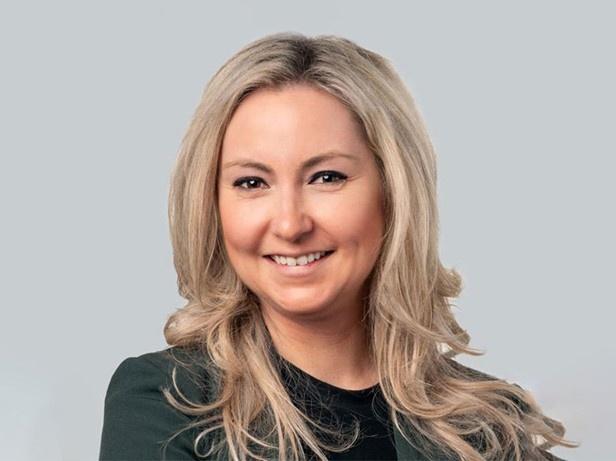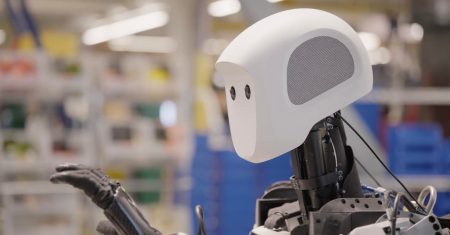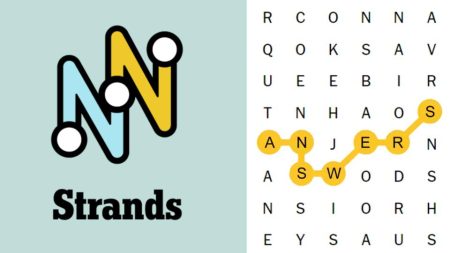Can you unite a diverse global workforce with . . . a better intranet? Yes, you can, according to Nutrien, world’s largest provider of crop inputs and services headquartered in Canada that operates in multiple countries around the world, serving about 500,000 farmers across the globe. The multibillion-dollar organization was formed through acquisitions over the years. As an integrated business, Nutrien provides a wide range of offerings including fertilizer, agricultural distribution and agronomic support, but the diversity of the business has also created challenges when it comes to melding disparate working groups and IT systems from different parts of the world.
I recently spoke with Megan Fielding, Nutrien’s Vice president of brand and culture communications, about how she is transforming the employee experience by introducing a unified intranet called “geo” to enable a single company culture across Nutrien’s workforce. The intranet was designed by digital integration experts at Infosys and its subsidiary design agency Wongdoody.
This global platform leverages the diversity of the business to strengthen connection and collaboration – bringing together all parts of the organization by allowing employees to share, connect and learn from each other – making Nutrien’s global employee base stronger together.
As companies all over the world wrestle with keeping employees connected in today’s global environment, there are learnings in this story for all of us.
Employees need a sense of belonging at work
As humans, social belonging is part of our fundamental makeup. If employees feel isolated, their engagement diminishes and organizational commitment suffers. Like many of the best companies in every industry, Nutrien says it has always put a high priority on building and shaping a positive corporate culture.
During “listening tours” with employees across the globe, Fielding found that employees generally loved working for Nutrien but did not have a way to seamlessly connect to other parts of the company besides their own. For example, she heard employees working in agronomy in Australia wanting to understand how employees go a thousand meters underground to mine potash in Saskatchewan, Canada. (Nutrien is the world’s largest supplier of Potash)
Fielding knew there was excitement and passion across the company, and that employees wanted to connect with peers worldwide. This feedback created the impetus for the “geo” project as a way to create a platform that enables the community that employees seek. The project received overwhelming support from the executive leadership team, who gave the green light to invest in building a global community with culture as a top priority.
Hybrid work on overdrive
While the hybrid work model attempts to balance the benefits of remote work with the need for in-person collaboration and connection, it is tough to build and maintain a corporate culture in the remote-work world. Ironically, Zoom recently joined the growing list of companies asking employees to return to the office. Like many companies, Zoom is adopting a hybrid work model, asking employees who live within 50 miles of a Zoom office to work in person two days a week.
Fielding faced a much more significant challenge. In Nutrien’s case, the hybrid workforce is only 10% of the total, with the remaining 90% working in the field, in mines, at manufacturing centers or serving customers directly. The technical challenge was to connect 25,000 employees across the globe through different connectivity options in multiple languages.
The corporate Intranet, transformed and consolidated
The task facing Nutrien and its partner Infosys and Wongdoody might be familiar to any corporate pro who has lived through multiple mergers and acquisitions. Nutrien hosted several regional intranets, each of which was managed separately and required manual efforts and offline processes to maintain. Duplication of content was common across the regional intranets, and the designs reflected little understanding of user behavior or engagement.
The scope of the project was to introduce a genuinely global intranet called “geo”, accessible by all employees. It needed to contain all the features one would expect, including simple navigation and search with language translation based on the user’s preferences, content usage analytics and mobile-friendly design.
A blueprint for implementation
The first step was to define the business requirements, including identifying the types of content, features and functionality required. To execute this, Infosys worked with different types of employee stakeholders across Nutrien. Infosys identified different user personas along with their desires and expectations. Infosys combined the Nutrien’s business priorities for geo with the employee feedback to create an internal brand-building exercise. In practical terms, this included treatment of the branding, colors, patterns and palettes used for the intranet.
The second step was to delineate the intranet’s governance by defining its management, roles and responsibilities for content creation and other maintenance activities and user access and security. The third step was to define the required technical architecture tools and features, such as document libraries, team sites, calendars and workflows.
Fourth was the design of a user interface that would be intuitive and user-friendly, and most importantly, that would reflect Nutrien’s brand and culture. The design goal was to ensure that the employee journey on the intranet would deliver all the information needed by a user. If there was a work-specific action, such as assigning a task to a team member or submitting a leave request, the goal was to complete the job within a maximum number of clicks.
Fifth, because there was so much existing legacy intranet infrastructure, there needed to be a plan for content migration. This included identifying content owners and establishing content management processes.
Sixth, Infosys performed user acceptance testing with employees. That was followed by a soft launch with key stakeholders to solicit feedback for improving the site. Finally, there was a full-scale launch from Nutrien CEO Ken Seitz to the broader organization to promote geo’s features and encourage user adoption.
For the employees, by the employees
Employee-generated content is a crucial component of the platform—as well as a good indicator of connection and engagement. Nutrien took a decentralized approach by prioritizing user-generated content and stakeholder accountability on relevant sections and pages. The company has moved away from a centralized, traditional corporate communications model to an audience-centric approach in which information pertinent to a team is managed by that team. The content published on “geo” is driven mainly by platform users, reflecting the ethos of creating a community for employees and by employees.
That said, there are still well-articulated policies in place to make sure that people understand standards for behavior on the platform. There is also a vetting process for getting content published, which includes both automated steps and a final approval from a human.
Wrapping up
“Geo” is living up to Fielding’s hopes because it is fostering better collaboration and communication among employees. The platform was designed to and helps increase engagement by supplying relevant content, creating opportunities for participation and sharing recognition for employee contributions. It also streamlines processes, automates many tasks and in general provides employees with resources to work more effectively.
There has been much talk about hybrid work over the past couple of years. In that time, I have talked to many CEOs and other executives about the challenges of maintaining a corporate culture in a remote and hybrid world.
Platforms like “geo” are essential for culture-building. It’s especially important that “geo” and other successful internal platforms are bidirectional; the two-way communication has caused Nutrien to look again at its purpose and values to be more inclusive and to make sure that the values are genuinely global and relevant to everybody.
Nutrien has always held the core values of safety, making sure everyone goes home safely every day, and integrity, doing business the right way. Thanks to geo, Nutrien has added two more value attributes: inclusion, ensuring that everybody feels like part of Nutrien regardless of background or identity or location, and results, emphasizing an entrepreneurial mindset for how work gets done.
According to Fielding, these intentional culture-building initiatives have resonated incredibly well with employees. In the bigger picture, geo shows how a potentially humdrum intranet project can be harnessed to promote genuine connection to purpose, commitment to shared values and better performance for customers, employees and other stakeholders. I am looking forward to see how generative AI is integrated into geo and hope I can report back on that.
Moor Insights & Strategy provides or has provided paid services to technology companies like all research and tech industry analyst firms. These services include research, analysis, advising, consulting, benchmarking, acquisition matchmaking, and video and speaking sponsorships. The company has had or currently has paid business relationships with 8×8, Accenture, A10 Networks, Advanced Micro Devices, Amazon, Amazon Web Services, Ambient Scientific, Ampere Computing, Anuta Networks, Applied Brain Research, Applied Micro, Apstra, Arm, Aruba Networks (now HPE), Atom Computing, AT&T, Aura, Automation Anywhere, AWS, A-10 Strategies, Bitfusion, Blaize, Box, Broadcom, C3.AI, Calix, Cadence Systems, Campfire, Cisco Systems, Clear Software, Cloudera, Clumio, Cohesity, Cognitive Systems, CompuCom, Cradlepoint, CyberArk, Dell, Dell EMC, Dell Technologies, Diablo Technologies, Dialogue Group, Digital Optics, Dreamium Labs, D-Wave, Echelon, Ericsson, Extreme Networks, Five9, Flex, Foundries.io, Foxconn, Frame (now VMware), Fujitsu, Gen Z Consortium, Glue Networks, GlobalFoundries, Revolve (now Google), Google Cloud, Graphcore, Groq, Hiregenics, Hotwire Global, HP Inc., Hewlett Packard Enterprise, Honeywell, Huawei Technologies, HYCU, IBM, Infinidat, Infoblox, Infosys, Inseego, IonQ, IonVR, Inseego, Infosys, Infiot, Intel, Interdigital, Jabil Circuit, Juniper Networks, Keysight, Konica Minolta, Lattice Semiconductor, Lenovo, Linux Foundation, Lightbits Labs, LogicMonitor, LoRa Alliance, Luminar, MapBox, Marvell Technology, Mavenir, Marseille Inc, Mayfair Equity, Meraki (Cisco), Merck KGaA, Mesophere, Micron Technology, Microsoft, MiTEL, Mojo Networks, MongoDB, Multefire Alliance, National Instruments, Neat, NetApp, Nightwatch, NOKIA, Nortek, Novumind, NVIDIA, Nutanix, Nuvia (now Qualcomm), NXP, onsemi, ONUG, OpenStack Foundation, Oracle, Palo Alto Networks, Panasas, Peraso, Pexip, Pixelworks, Plume Design, PlusAI, Poly (formerly Plantronics), Portworx, Pure Storage, Qualcomm, Quantinuum, Rackspace, Rambus, Rayvolt E-Bikes, Red Hat, Renesas, Residio, Samsung Electronics, Samsung Semi, SAP, SAS, Scale Computing, Schneider Electric, SiFive, Silver Peak (now Aruba-HPE), SkyWorks, SONY Optical Storage, Splunk, Springpath (now Cisco), Spirent, Splunk, Sprint (now T-Mobile), Stratus Technologies, Symantec, Synaptics, Syniverse, Synopsys, Tanium, Telesign,TE Connectivity, TensTorrent, Tobii Technology, Teradata,T-Mobile, Treasure Data, Twitter, Unity Technologies, UiPath, Verizon Communications, VAST Data, Ventana Micro Systems, Vidyo, VMware, Wave Computing, Wellsmith, Xilinx, Zayo, Zebra, Zededa, Zendesk, Zoho, Zoom, and Zscaler. Moor Insights & Strategy founder, CEO, and Chief Analyst Patrick Moorhead is an investor in dMY Technology Group Inc. VI, Fivestone Partners, Frore Systems, Groq, MemryX, Movandi, and Ventana Micro., MemryX, Movandi, and Ventana Micro.
Read the full article here










